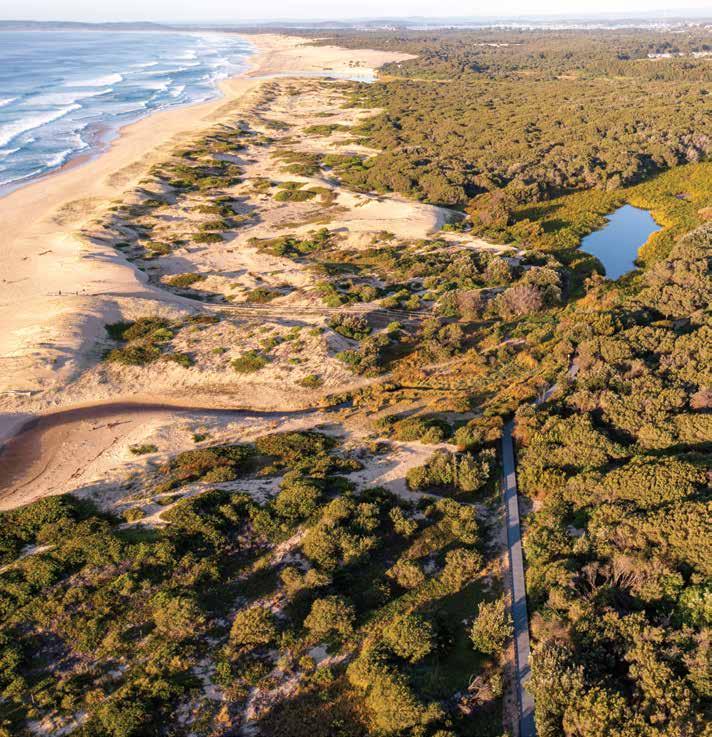
2 minute read
Part B: Estuary
Defining features of Lake Macquarie’s estuary
• The Largest coastal lake in NSW, covering an area of about 110km2, with a catchment of about 650km2 , formed over the past 6000 years from flooding of coastal zone by sea level rise
• Significant ecological values, providing for a range of aquatic and land-based recreational activities (refer to Table 1 for more information about the characteristics of the Lake Macquarie catchment)
• Complex estuary hydrodynamic processes and responses
• Small tidal range of about 100mm each tidal cycle (range can be wider with rainfall and offshore tidal condition changes)
• Approximately 174km of foreshore
• Foreshore erosion mainly due to wind waves
• Rising sea level and lake levels
• Local government areas of Lake Macquarie, Central
Coast, Wollongong, Shoalhaven and Rockdale identified as having greatest risk of inundation from sea level rise (to 1.1m), (Department of Industry,
Science, Energy and Resources 2009) representing more than 50 per cent of residential buildings at risk in NSW • Areas affected by flooding around entire foreshore • 12.4km2 of seagrass coverage in Lake Macquarie (third largest area of seagrass in NSW), with most abundant species being Zostera capricorni. Threatened species
Posidonia australis, as well as Halophila ovalis and
Ruppia megacarpa, also present.
• Cooling water from Eraring and Vales Point power stations discharge into Lake Macquarie
• Some coal mines licensed to discharge mine water at the surface, flowing into the lake • Improvement in water quality over the past 20 years, mainly by reducing nutrients and sediments entering the lake
• Mix of shallow sand nearshore areas, deeper rocky foreshores and shorelines thinly mantled with muddy sands
• Strong influence from catchment on the health of the estuary
• Extensive urban and industrial development, particularly low-lying development
• Increasing demand for land and water based recreational opportunities
Key management issues and challenges

• Controls on catchment yields of sediments, nutrients and organics are key strategies for managing the ecological health of Lake
Macquarie • Minimising the impact of stormwater pollution • Areas respond differently to the inflows of stormwater from development in the immediate catchment, with long reaches of poorly flushed estuarine creeks affected by both sediment load and impacts of development on riparian vegetation Third Creek, Redhead
• Delivering a whole-of-government approach with improvement in managing coastal issues across local government boundaries • Funding uncertainty for ongoing lake and catchment improvement works • Monitoring of climate change impacts on foreshore improvement assets (particularly foreshore stabilisation assets) • Balancing recreational demand with the need to manage impacts on the estuarine environment.









